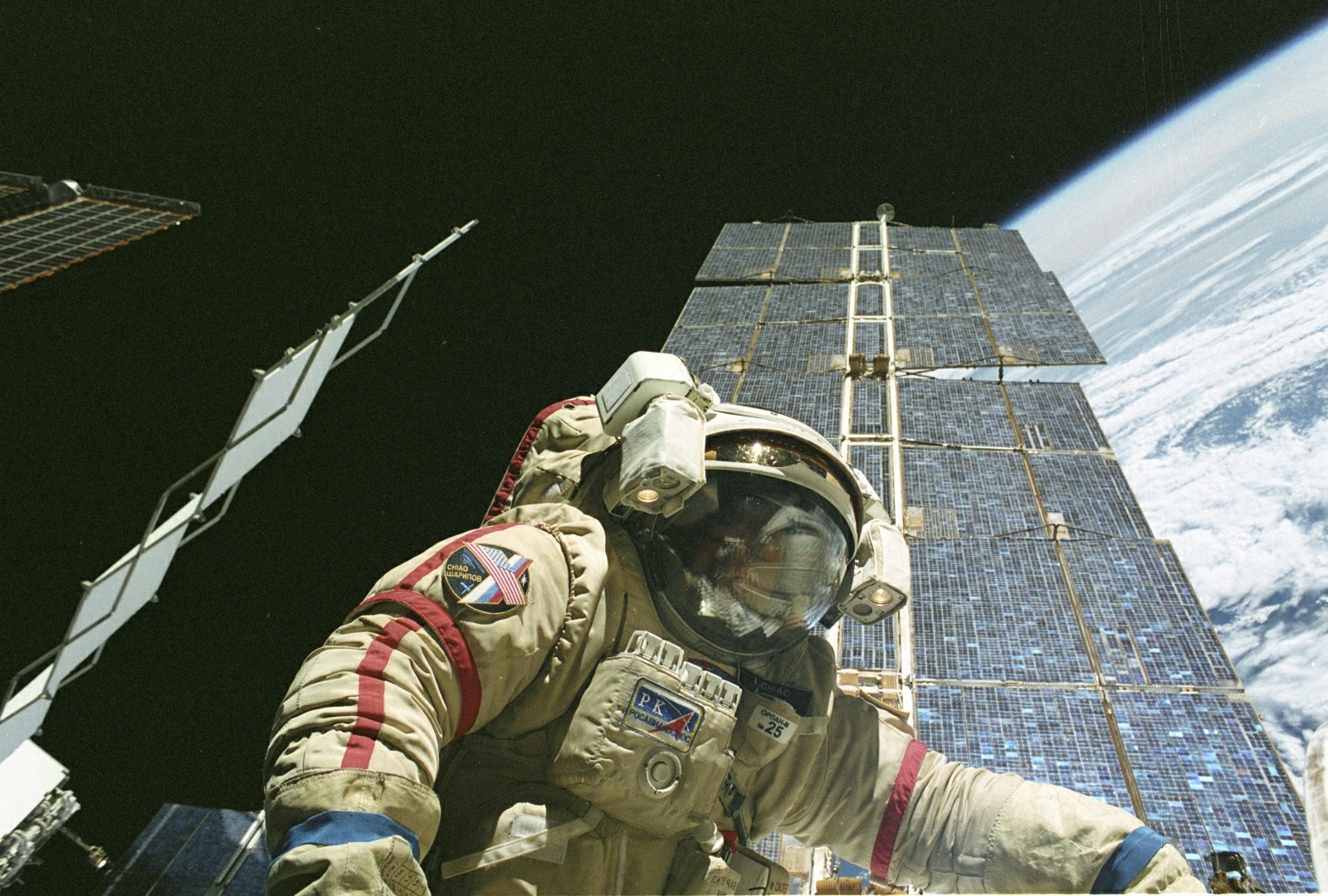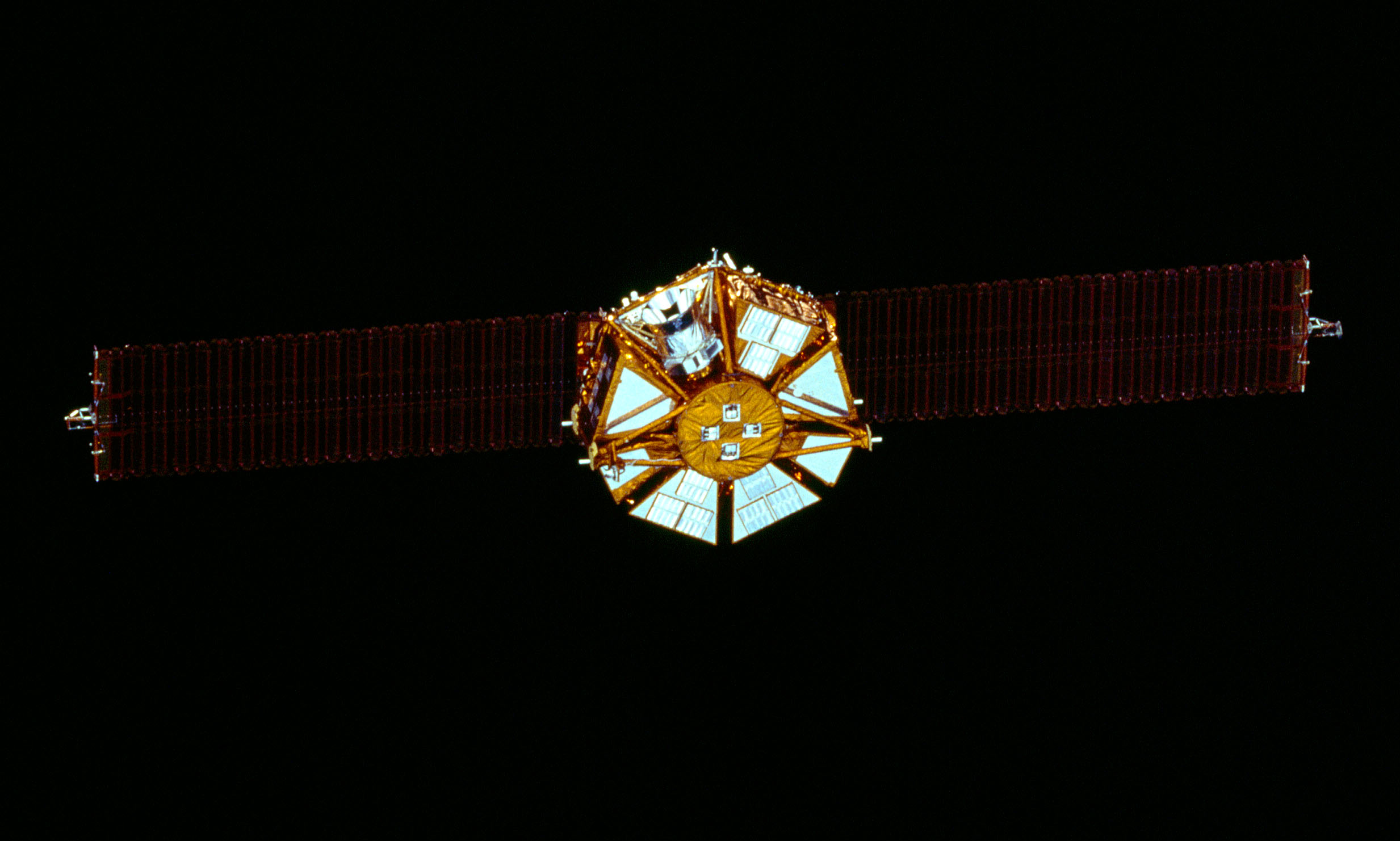|
STS-72
STS-72 was a Space Shuttle ''Endeavour'' mission to capture and return to Earth a Japanese microgravity research spacecraft known as Space Flyer Unit (SFU). The mission launched from Kennedy Space Center, Florida on 11 January 1996. Crew Spacewalks * '' Chiao and Barry '' – EVA 1 *EVA 1 Start: 15 January 1996 – 05:35 UTC *EVA 1 End: 15 January – 11:44 UTC *Duration: 6 hours, 9 minutes * '' Chiao and Scott '' – EVA 2 *EVA 2 Start: 17 January 1996 – 05:40 UTC *EVA 2 End: 17 January – 12:34 UTC *Duration: 6 hours, 54 minutes Mission highlights STS-72, the 74th flight of the Space Shuttle program and the 10th of the orbiter ''Endeavour'' was launched at 4:41AM EST 11 January 1996 after a brief hold at the T-5-minute mark due to communication issues. The nighttime launch window was in support of the mission's primary objective, the capture and return to Earth of a Japanese microgravity research spacecraft known as Space Flyer Unit (SFU). The SFU was launched by Japan's ... [...More Info...] [...Related Items...] OR: [Wikipedia] [Google] [Baidu] |
Koichi Wakata
is a Japanese engineer and a JAXA astronaut. Wakata is a veteran of four NASA Space Shuttle missions, a Russian Soyuz mission, and a long-duration stay on the International Space Station. During a nearly two-decade career in spaceflight, he has logged more than eleven months in space. During Expedition 39, he became the first Japanese commander of the International Space Station. Wakata flew on the Soyuz TMA-11M/Expedition 38/Expedition 39 long duration spaceflight from 7 November 2013 to 13 May 2014. During this spaceflight he was accompanied by Kirobo, the first humanoid robot astronaut. Career Wakata was born in Ōmiya, Saitama, Japan, earned a Bachelor of Science degree in Aeronautical Engineering in 1987, a Master of Science degree in Applied Mechanics in 1989, and a Doctorate in Aerospace Engineering in 2004 from Kyushu University. He worked as a structural engineer for Japan Airlines. JAXA career Wakata was selected by the National Space Development Agency of Japan (NA ... [...More Info...] [...Related Items...] OR: [Wikipedia] [Google] [Baidu] |
Leroy Chiao
Leroy Chiao (born August 28, 1960) is an American chemical engineer, retired NASA astronaut, entrepreneur, motivational speaker, and engineering consultant. Chiao flew on three Space Shuttle flights, and was the commander of Expedition 10, where he lived on board the International Space Station from October 13, 2004 to April 24, 2005. He is also a co-author and researcher for the Advanced Diagnostic Ultrasound in Microgravity project. Early life Chiao was born in Milwaukee, Wisconsin and raised in Danville, California. His parents were originally from mainland China and met while studying at a university in Taiwan before immigrating to the U.S. Chiao graduated from Monte Vista High School in Danville in 1978. In 1983, he earned a B.S. in chemical engineering from the University of California, Berkeley. He later earned an M.S. and a Ph.D. in chemical engineering from the University of California, Santa Barbara in 1985 and 1987, respectively. Chiao's parents were both chemical ... [...More Info...] [...Related Items...] OR: [Wikipedia] [Google] [Baidu] |
Brian Duffy (astronaut)
Brian Duffy (born June 20, 1953, Boston, Massachusetts) is a retired U.S. Air Force colonel and a former NASA astronaut. He flew aboard four Space Shuttle missions. Education Duffy graduated from Rockland High School, Rockland, Massachusetts in 1971. In 1975 he received a Bachelor of Science degree in mathematics from the United States Air Force Academy and completed Undergraduate Pilot Training at Columbus Air Force Base, Mississippi, in 1976. In 1981 he received a Master of Science degree in systems management from the University of Southern California.Air Force Lt. Col. Brian Duffy, 38: Atlantis co-pilot) " UPI, 22 Mar. 1992. Military career After graduating from the USAF Academy in 1975, Duffy was selected ...[...More Info...] [...Related Items...] OR: [Wikipedia] [Google] [Baidu] |
Space Flyer Unit
The was a spacecraft which was launched by Japan on March 18, 1995. Main Reference Technical data  The Space Flyer Unit was launched from from a H-II vehicle. It carried testing materials and research data that held value to NASA. The crew of STS-72 aboard
The Space Flyer Unit was launched from from a H-II vehicle. It carried testing materials and research data that held value to NASA. The crew of STS-72 aboard [...More Info...] [...Related Items...] OR: [Wikipedia] [Google] [Baidu] |
Spartan Packet Radio Experiment
The Spartan Packet Radio Experiment (SPRE) was an Amateur Radio communications experiment that flew on the Space Shuttle '' Endeavour''s STS-72 mission as part of NASA's Spartan/OAST-Flyer spacecraft in January 1996. The experiment was intended to test the tracking of satellites via amateur packet radio (Automatic Packet Reporting System), and was designed and built by the Amateur Radio Association at the University of Maryland (W3EAX).http://www.amsat.org/amsat/ftp/news/1995/ans343.txt Required GPS data for the experiment was provided by another portion of the Spartan payload. The operating mode was FM, AFSK Frequency-shift keying (FSK) is a frequency modulation scheme in which digital information is transmitted through discrete frequency changes of a carrier signal. The technology is used for communication systems such as telemetry, weather ball ... 1200 baud packet radio, transmitted at 145.550 MHz.http://www.hamradio-online.com/1995/nov-dec/spartan.html Refere ... [...More Info...] [...Related Items...] OR: [Wikipedia] [Google] [Baidu] |
STS-75
STS-75 was a 1996 NASA Space Shuttle mission, the 19th mission of the ''Columbia'' orbiter. Crew Allen, Hoffman, Nicollier and Chang-Díaz had previously been members of the STS-46 crew, which had flown the TSS-1 experiment in 1992. Mission objective Tethered Satellite System The primary objective of STS-75 was to carry the Tethered Satellite System Reflight (TSS-1R) into orbit and to deploy it spaceward on a conducting tether. The mission also flew the United States Microgravity Payload (USMP-3) designed to investigate materials science and condensed matter physics. The TSS-1R mission was a reflight of TSS-1 which was flown onboard Space Shuttle ''Atlantis'' on STS-46 in July/August 1992. The Tether Satellite System circled the Earth at an altitude of 296 kilometers, placing the tether system within the rarefied electrically charged layer of the atmosphere known as the ionosphere. STS-75 mission scientists hoped to deploy the tether to a distance of . Over 19 kilometers of ... [...More Info...] [...Related Items...] OR: [Wikipedia] [Google] [Baidu] |
STS-74
STS-74 was the fourth mission of the US/Russian Shuttle-Mir Program, and the second docking of the Space Shuttle with ''Mir''. Space Shuttle ''Atlantis'' lifted off from Kennedy Space Center launch pad 39A on 12 November 1995. The mission ended 8 days later with the landing of ''Atlantis'' back at Kennedy. It was the second in a series of seven straight missions to the station flown by ''Atlantis''. The shuttle delivered a pair of solar arrays along with the Russian-built Mir Docking Module to allow docking with the station by the space shuttle without moving ''Mirs ''Kristall'' module. During the three-day docking, the Russian, Canadian, and American crew transferred supplies and equipment between ''Atlantis'' and ''Mir'', moved several long-term experiments, and upgraded the station with new equipment, particularly during the installation of the docking module. Crew Mission background The crew's preparation for the mission had begun some thirteen months earlier in 1994, w ... [...More Info...] [...Related Items...] OR: [Wikipedia] [Google] [Baidu] |
Space Shuttle Endeavour
Space Shuttle ''Endeavour'' (Orbiter Vehicle Designation: OV-105) is a retired orbiter from NASA's Space Shuttle program and the fifth and final operational Shuttle built. It embarked on its first mission, STS-49, in May 1992 and its 25th and final mission, STS-134, in May 2011. STS-134 was expected to be the final mission of the Space Shuttle program, but with the authorization of STS-135 by the United States Congress, Space Shuttle Atlantis, ''Atlantis'' became the last shuttle to fly. The United States Congress approved the construction of ''Endeavour'' in 1987 to replace the Space Shuttle Challenger, Space Shuttle ''Challenger'', which was Space Shuttle Challenger disaster, destroyed in 1986. NASA chose, on cost grounds, to build much of ''Endeavour'' from spare parts rather than refitting the Space Shuttle Enterprise, Space Shuttle ''Enterprise'', and used structural spares built during the construction of ''Space Shuttle Discovery, Discovery'' and Space Shuttle Atlantis, ... [...More Info...] [...Related Items...] OR: [Wikipedia] [Google] [Baidu] |
University Of Maryland
The University of Maryland, College Park (University of Maryland, UMD, or simply Maryland) is a public land-grant research university in College Park, Maryland. Founded in 1856, UMD is the flagship institution of the University System of Maryland. It is also the largest university in both the state and the Washington metropolitan area, with more than 41,000 students representing all fifty states and 123 countries, and a global alumni network of over 388,000. Together, its 12 schools and colleges offer over 200 degree-granting programs, including 92 undergraduate majors, 107 master's programs, and 83 doctoral programs. UMD is a member of the Association of American Universities and competes in intercollegiate athletics as a member of the Big Ten Conference. The University of Maryland's proximity to the nation's capital has resulted in many research partnerships with the federal government; faculty receive research funding and institutional support from many agencies, such ... [...More Info...] [...Related Items...] OR: [Wikipedia] [Google] [Baidu] |
Tanegashima Space Center
The (TNSC) is the largest rocket-launch complex in Japan with a total area of about 9.7 square kilometers. It is located on the southeast coast of Tanegashima, an island approximately south of Kyushu. It was established in 1969 when the National Space Development Agency of Japan (NASDA) was formed, and is now run by JAXA. The activities that take place at TNSC include assembly, testing, launching, and tracking satellites, as well as rocket engine firing tests. Facilities On-site main facilities include: * Yoshinobu Launch Complex is a launch site for launch vehicles like the H-IIA * Vehicle Assembly Building (VAB) * Second Spacecraft Test and Assembly Building * Takesaki Range Control Center Those facilities are used for performing operations from assembling launch vehicles, maintenance, inspections, final checks of satellites, loading satellites onto launch vehicles, rocket launches, and tracking launch vehicles after liftoff. The TNSC plays a pivotal role in satellit ... [...More Info...] [...Related Items...] OR: [Wikipedia] [Google] [Baidu] |
Global Positioning System
The Global Positioning System (GPS), originally Navstar GPS, is a satellite-based radionavigation system owned by the United States government and operated by the United States Space Force. It is one of the global navigation satellite systems (GNSS) that provides geolocation and time information to a GPS receiver anywhere on or near the Earth where there is an unobstructed line of sight to four or more GPS satellites. It does not require the user to transmit any data, and operates independently of any telephonic or Internet reception, though these technologies can enhance the usefulness of the GPS positioning information. It provides critical positioning capabilities to military, civil, and commercial users around the world. Although the United States government created, controls and maintains the GPS system, it is freely accessible to anyone with a GPS receiver. The GPS project was started by the U.S. Department of Defense in 1973. The first prototype spacecraft was lau ... [...More Info...] [...Related Items...] OR: [Wikipedia] [Google] [Baidu] |





_pre-launch.jpg)
